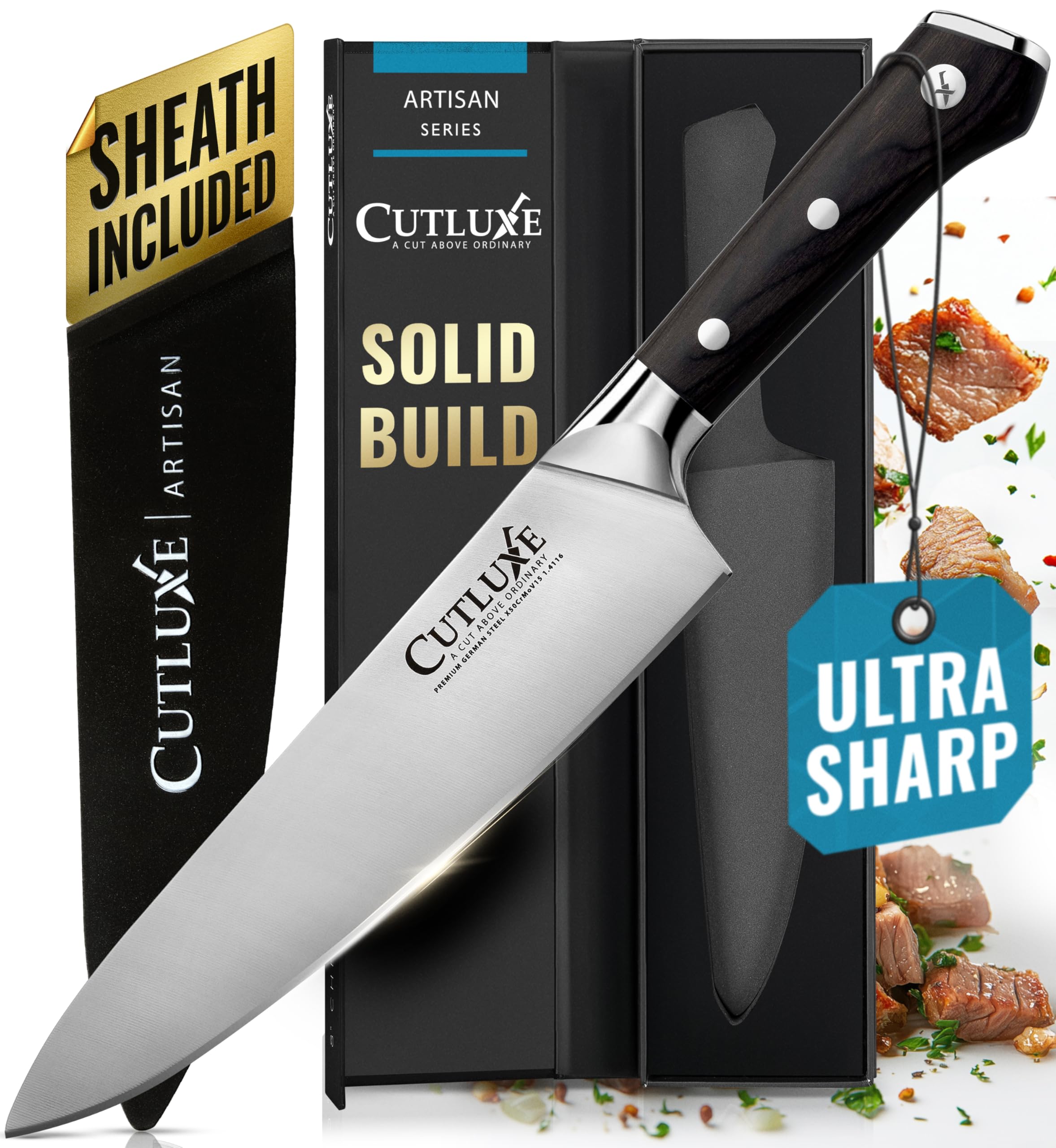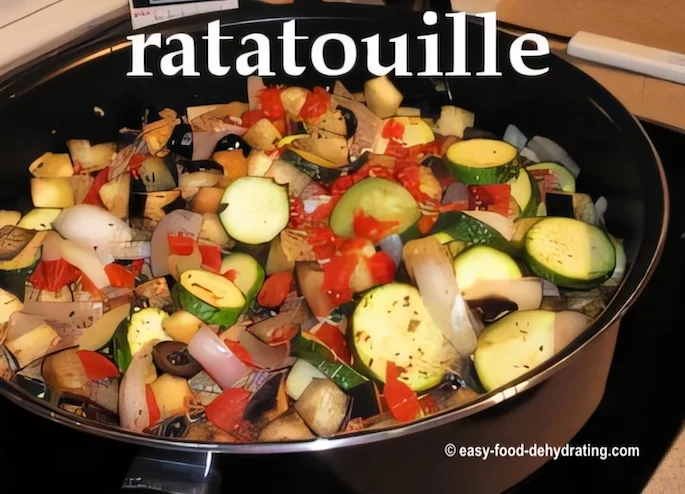What We Mean by “Dehydrate”
Here at Easy Food Dehydrating, “dehydrate” always means using an electric food dehydrator — the easy, reliable way to dry food at home.
- Home
- Dehydrating Vegetables: Step-by-Step Guides by Type
- How to Dehydrate Peppers for Easy Storage and Bold Flavor
How to Dehydrate Peppers at Home:
Sweet, Spicy, and Shelf-Stable

Learning how to dehydrate peppers at home is a smart way to capture their vibrant color, bold flavor, and valuable nutrients - without worrying about spoilage. From sweet bell peppers to fiery jalapeños, drying them makes your favorite peppers shelf-stable and ready for recipes all year long.
✅ Quick Answer: How do you dehydrate peppers?
Slice peppers into ¼-inch strips, spread them on dehydrator trays without overlap, and dry at 125–135°F for 4–12 hours until leathery. Rotate trays for even drying. Store airtight or vacuum-sealed with oxygen absorbers for up to a year.
Whether you want crunchy snack strips, flavorful soup add-ins, or spicy powders for chili and rubs, dehydrating peppers is simple, space-saving, and budget-friendly. Let’s dive into the easy method that will keep your peppers at their peak.
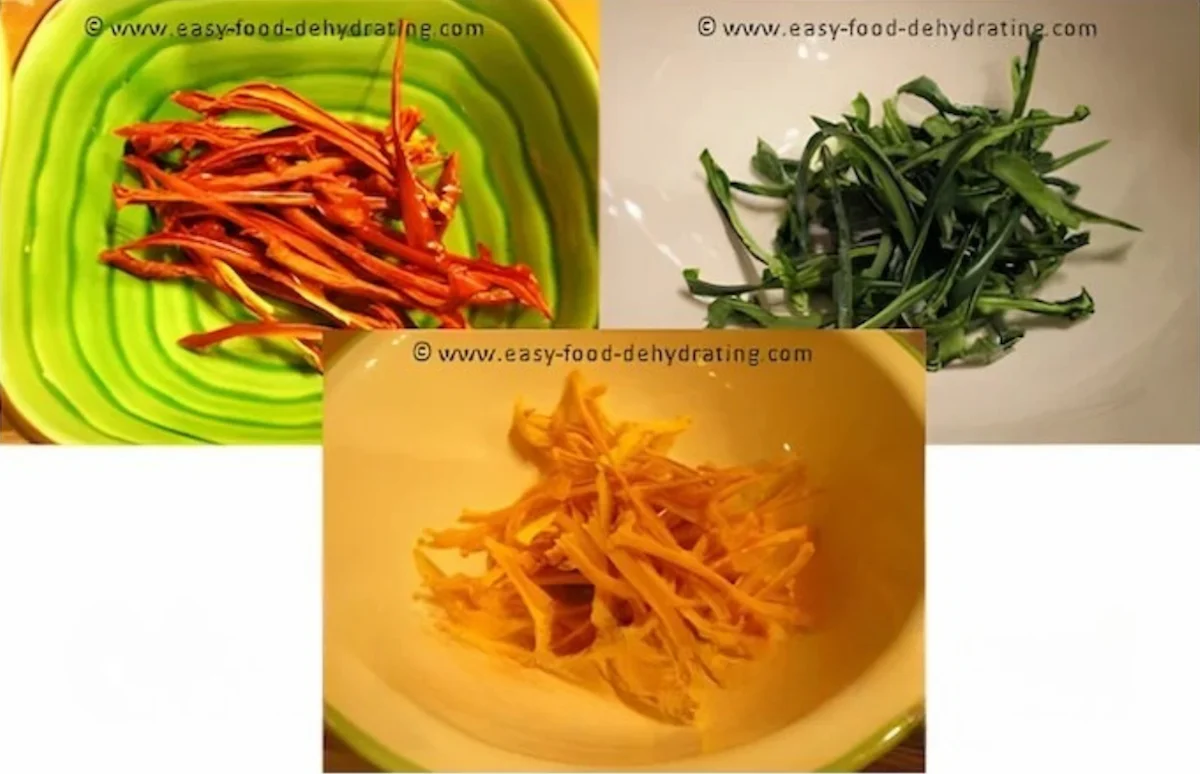
Want to save on prep time?
Then keep this in mind while you're out shopping: you can use frozen varieties too! Keep a lookout for BOGO ("buy one / get one") sales.
Bell Pepper Nutrition: Why They’re So Good for You
VITAMINS: Peppers are not only colorful, but they are a fantastic source of Vitamin A—with the red variety being #1. The Vitamin C leaders are the yellow peppers!
The champion Folate pepper is the red pepper!
All three contain trace amounts of Niacin, vitamin B6, and Pantothenic Acid.
MINERALS: The minerals found in all three types are a good source of Potassium, followed by Phosphorus, Magnesium, and Calcium. There are trace amounts of Iron, Zinc, Manganese, and Copper. Selenium can be found in the red and yellow peppers, and Fluoride only in the green pepper!
Green and red, but not yellow Peppers, contain Omega-3 and Omega-6 fatty acids.
Don't worry: There is no pop quiz.
For more on peppers and their nutrition, I went to WebMD and discovered their health benefits right here.
Step-by-Step Guide: Dehydrate Peppers the Easy Way
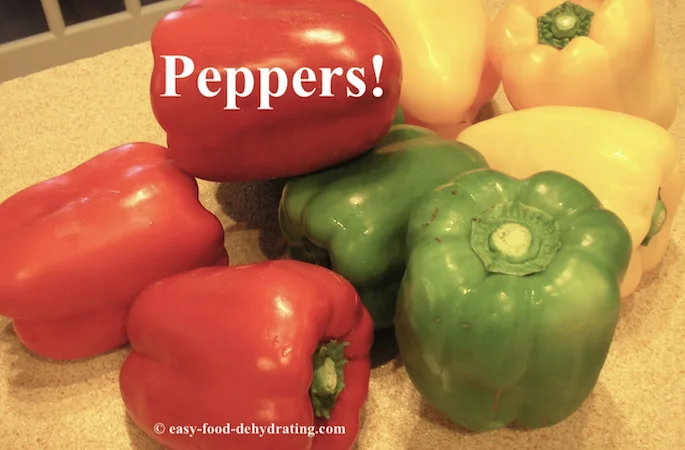
Let's get busy learning how to dehydrate peppers!
If using the frozen peppers, ignore step 1.
- Remove the stem and seeds and slice into 1/4" strips.
- Arrange the slices on your food dehydrator trays, making sure they don't overlap.
- Turn on your food dehydrator and set the temperature between 125°F and 135°F (or per your food dehydrator's instructions).
💡 Tip: Outside the U.S.? Most dehydrating temps here are listed in Fahrenheit - use our quick converter to see the Celsius equivalent for your machine.
- When fully dehydrated, they will be leathery.
- Drying time: between 4-12 hours.
- Please remember to rotate your trays for even drying.
The Must-Have Tool That Makes Pepper Prep Easy
Begin by Using a Good Sharp Knife by Cutluxe!
Check out this great chef's knife with a full tang that means the handle and blade "are one" so they can't come apart when we're slicin' and a dicin'.
I know these Cutluxe Chef knives may be a little expensive, but they do last pretty much a lifetime when you maintain their cutting edges.
As an Amazon Associate, I earn from qualifying purchases — this does not affect the price you pay. Read full disclosure.
Before and After: What Dried Peppers Really Look Like
The pics below are BEFORE—and AFTER—dehydrating!
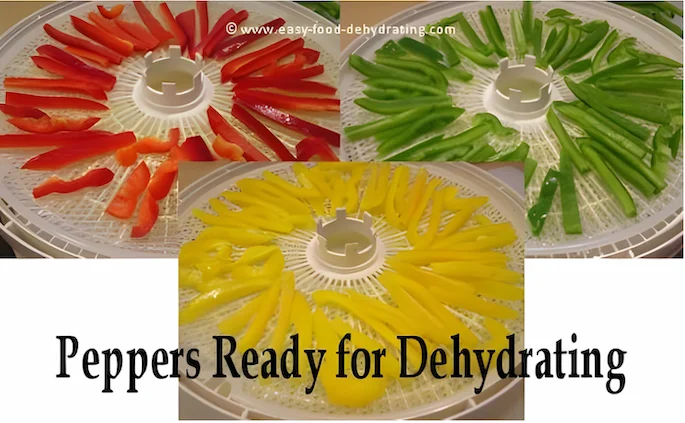
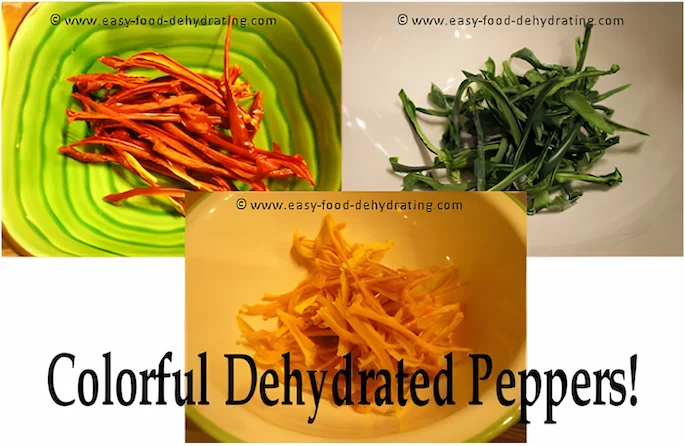
Pepper Colors Explained: Flavor Secrets of Red, Green & Yellow
Bell peppers come in a variety of colors, including red, green, and yellow. The different colors of bell peppers are the result of different ripening times. Green bell peppers are the least ripe, followed by yellow, and then red.
The longer a bell pepper stays on the vine, the sweeter and more flavorful it becomes. So, if you're looking for a sweet, mellow flavor, stick with red bell peppers.
If you prefer a more sharp, pungent flavor, go for green bell peppers. And if you like something in between, yellow bell peppers are the way to go!
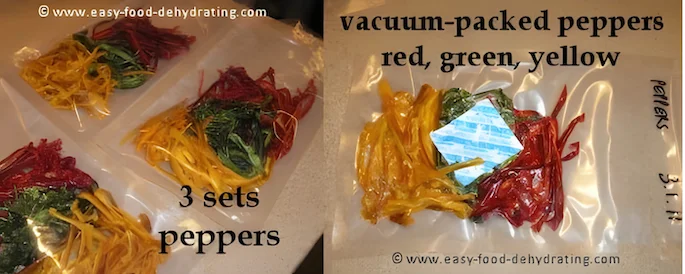
Storage Hacks: Keep Peppers Fresh with Oxygen Absorbers
It's a lot of fun learning how to dehydrate peppers and getting them all chopped up in 'one go' saves prep time later on.
In my side-by-side photos, you'll see that I have made three separate bags with a combination of yellow, green, and red peppers—perfect for a stir-fry or omelet! Simply re-hydrate when you're ready to use them.
The fresh peppers were originally store-bought three-to-a-pack, and that photo shows nine peppers total, so you can see how much room you can save in the fridge by dehydrating them!
The blue packet in the photo above on the right - is a 100cc oxygen absorber. That is one vacuum-packed bag!
Click on the following links to learn about adding desiccant packets and oxygen absorbers and their important role in food dehydrating and safe storage, and how to vacuum-seal your dehydrated vegetables for long-term storage.
Try This Delicious Recipe
Ratatouille
and fill YOUR Kitchen with a delightful Mediterranean aroma!
Try this fantastic dish of onions, peppers, zucchini and squash. It's known as ratatouille. This dish is guaranteed to fill your kitchen with the fantastic aromas that the Mediterranean area is famous for.
Try slicing your peppers in different ways: in rings, "fat" slices, or thin slices... or diced!
Add orzo or white rice. My ratatouille recipe shows you how to do just that.
Mild to Wild: Choosing the Right Heat Level in Peppers
Different types of peppers are distinguished by the amount of heat they pack. The Scoville scale is used to measure the heat of peppers, see next section.
Some of the world's hottest peppers include the naga viper, ghost pepper, and Carolina reaper. These peppers can pack a serious punch and should be handled (and eaten!) with caution.
For those who enjoy a little bit of heat, however, these peppers add an exciting new dimension to your cooking. Try incorporating them into your favorite dishes for a spicy twist.
The Scoville Scale: How Peppers Get Their Heat Rating
The Scoville scale is a measure of the heat of peppers, with the hottest peppers being at the top of the scale. The scale is named after its creator, Wilbur Scoville, who developed it in 1912.
The Scoville scale is based on the amount of capsaicin, the compound that gives peppers their heat. The hotter the pepper, the more capsaicin it contains.
Do Dried Peppers Taste Stronger? (Hint: Yes, They Do!)
Dehydrated peppers generally have a more intense flavor than fresh peppers. This is because the dehydration process concentrates the flavors of the pepper as the water is removed.
Dehydrated peppers are a great way to add a bold, spicy flavor to your dishes. Try using them in sauces, soups, or spice rubs for an extra kick of flavor.
Thanks for stopping by to learn how to dehydrate peppers!
Pepper Drying FAQs: Everything You Wanted to Know
Can I dehydrate peppers in the oven?
Can I dehydrate peppers in the oven?
Yes. Preheat to 170°F (or lowest setting), slice peppers thinly, and spread in single layers on parchment-lined trays. Keep the door slightly open for airflow. Dry 6–8 hours (up to 12), rotating trays. Peppers are done when leathery and brittle.
How do you dry peppers in an air fryer?
How do you dry peppers in an air fryer?
Use the lowest temp or dehydrator mode. Slice peppers thin, arrange in single layers, and dehydrate for 4–7 hours, shaking the basket occasionally. Work in batches for best airflow. They’re ready when dry, leathery, and slightly brittle.
How long will dehydrated peppers last?
How long will dehydrated peppers last?
Stored airtight or vacuum-sealed with oxygen absorbers, dehydrated peppers last up to 12 months. For best flavor, use within 6–9 months and store in a cool, dark pantry.
What’s the best way to rehydrate dried peppers?
What’s the best way to rehydrate dried peppers?
Soak in hot water for 10–15 minutes until soft, or add directly to soups and stews where they’ll rehydrate during cooking.
Do dried peppers taste stronger than fresh?
Do dried peppers taste stronger than fresh?
Yes. Dehydrating concentrates their natural flavor and heat, making them perfect for spice blends, sauces, and rubs.
Thanks for joining me in learning how to dehydrate peppers! Whether you use them for soups, stir-fries, or your own chili powder blend, you’ll love the space-saving, flavor-packed results.
And if you’re ready to keep experimenting with tasty dried foods, don’t forget to grab your copy of the free 5 Dried Food Recipes You'll Actually Love PDF (below). Inside you’ll find my favorites—like carrot soup, minestrone, split pea soup, spicy beef jerky, and even banana cinnamon rolls. Enjoy!
Get 5 Dried Food Recipes You'll Actually Love
Here's where you can get your copy of our all new
5 Dried Food Recipes (That Actually Taste Great)
They're my all-time favorite easy dried food meals!
Get it here right now.
For Free!
Before You Go...
If you enjoyed this page, tap the ❤️ in the lower right-hand corner.
It saves this page to your Grow bookmarks so you can find it again later.
You’ll also see quick share buttons to copy the link, post to Facebook,
or save it straight to Pinterest.
